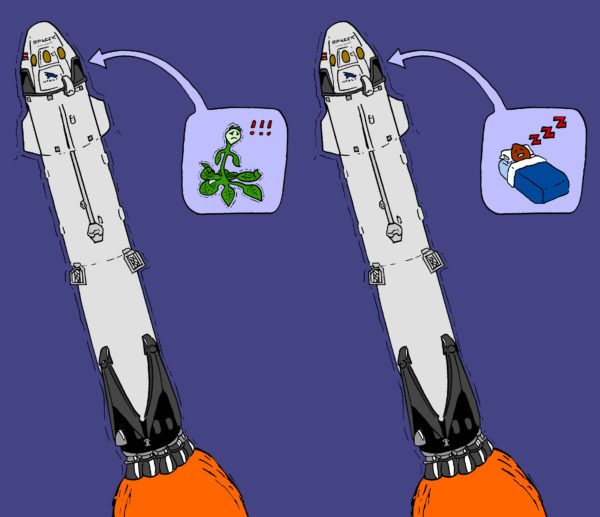Far-red Light
Far-red light can be used to induce dormancy in seeds to better control certain astrobotany experiments.
Astrobotanists need to send plants into space to perform their research. Specifically, astrobotanists typically send the model plant organism Arabidopsis thaliana into space. A critical detail that not many people may think about is: when should we start growing the plant? The answer is usually: when it’s in space. When an astrobotany researcher starts their experiment, time is often of the essence. Critical stages such as germination, flowering, etc. must be monitored closely and controlled for. In addition to this, if the plant starts to grow before launch it will experience rapid acceleration that could affect its genetic profile.
So what happens when a plant biologist wants to study a plant in space and they have everything planned out perfectly… and then suddenly the rocket launch is scrubbed due to poor weather conditions? The plant is already planted. What to do??

The answer lies in far-red light. Seeds are susceptible to lighting and take environmental cues from lighting. The plant biology community (specifically The Gilroy Lab) has discovered that far-red light can be used to influence seed germination. Shining far-red light onto seeds has been shown to delay germination as long as the seed is sealed in a completely dark container. When the seed is exposed to light it can germinate again.
